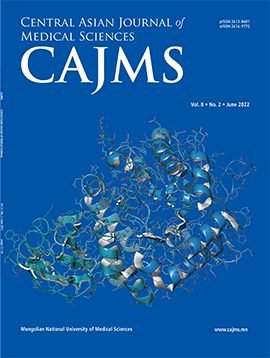Minimal Stimulation Using Gonadotropin Combined with Clomiphene Citrate or Letrozole for Intrauterine Insemination
DOI:
https://doi.org/10.24079/cajms.2022.12.006Keywords:
Intrauterine insemination, minimal stimulation, gonadotropin, letrozole, clomiphene citrateAbstract
Objective: In this study we aimed to evaluate the administration efficiency of first-line drugs such as clomiphene citrate (CC), letrozole (L), and the gonadotropin follicle stimulating hormone (FSH) to be used in ovulation induction for intra uterine induction (IUI) in Mongolian patients. Methods: In this prospective single center study we recruited 158 infertile women with polycystic ovarian syndrome (PCOS). Results: In the FSH group, 15 patients (31.2 %) had mycoplasma. On the other hand, the group CC and the L group had a significantly higher number of pregnancies compared than the FSH group. Moreover, there was a trend for an increasing volume of menstruation in the CC group. 38.6 % having a medium volume of menstruation, while 59.6 % had a big volume of menstruation. Stimulation characteristics of patients shows that estradiol on started day (SE2) was significantly higher in the FSH group (768.91 ± 575.64), while it was 523.66 ± 435.84 and 419.36 ± 326.30 in the CC and the L groups, respectively. Conclusions: A minimal stimulation protocol using FSH, CC and L separately was done in Mongolian women with polycystic ovarian syndrome (PCOS). Clinical pregnancy rates were 1.46 ± 0.50 in the FSH group, 1.35 ± 0.48 in CC group, and 1.38 ± 0.49 in L group.
Downloads
292
Downloads
Published
How to Cite
Issue
Section
License
Copyright (c) 2022 Mongolian National University of Medical Sciences

This work is licensed under a Creative Commons Attribution-NonCommercial 4.0 International License.




